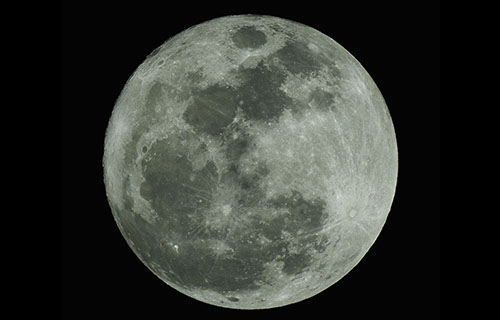Though data from kiertoradalla have suggested presence of vesi ice, the exploration of kuu- craters in the polar regions of moon has not been possible due to the absence of suitable technology to power kuu- rovers in the perpetually dark, super cold areas having a temperature of –240°C. The project PHILIP (‘Powering rovers by High Intensity Laser Induction on Planeetat’) commissioned by European Tila Agency is ready to develop prototypes that would provide laser power to these rovers in an effort to explore evidence of existence of vesi in these craters.
Kuu ei pyöri akselinsa ympäri kiertäessään maan ympäri, joten kuun toinen puoli ei ole koskaan näkyvissä maasta, mutta molemmat puolet saavat kaksi viikkoa auringonvaloa ja kaksi viikkoa yötä.
However, there are sunken areas in craters situated in the polar regions of moon that never receive sun-light because low angle of sunlight that leave the deep interiors of the craters in shadow forever. This perpetual darkness in the polar craters make them super cold in the range of –240°C corresponding roughly to about 30 Kelvin i.e. 30 degrees above absolute zero. The data received from the kuu- kiertoradalla of ESA, ISRO ja NASA have shown that these permanently shadowed areas are rich in hydrogen, suggestive of presence of vesi (ice) in these craters. This information is of interest for science as well as a local source of ‘vesi and oxygen’ for future moon human habitation. Therefore, there is a need of a rover that could go down to such craters, drill and bring sample for testing to confirm presence of ice there. Given kuu- rovers are usually solar powered, this has not been achieved so far because it has not been possible to ensure power supply to rovers while it explores some of these dark craters.
Yksi harkinnanvaraista oli ydinvoimalla toimivien rovereiden hankkiminen, mutta tämä todettiin sopimattomaksi jäätutkimukseen.
Hanke ottaa mallia raporteista laserin käytöstä droneihin, jotta ne pysyvät ylhäällä pidempään. Philip (‘Powering rovers by High Intensity Laser Induction on Planeetat’) was commissioned by European Tila Agency to design a complete laserkäyttöinen tutkimustehtävä.
The PHILIP project is completed now and the ESA is one step closer to powering kuu- rovers with lasers to explore the super cold dark kuun kraatterit napojen lähellä.
ESA would now begin to develop prototypes for exploring the dark craters that would provide evidence for confirmation of the presence of vesi (ice) leading to realisation of human dream to inhabit this satellite.
***
Lähteet:
Euroopan avaruusjärjestö 2020. Mahdollistaminen ja tuki / Avaruustekniikka ja teknologia. Laserkäyttöinen rover tutkia Kuun tummia varjoja. Julkaistu 14. toukokuuta 2020. Saatavilla verkossa osoitteessa http://www.esa.int/Enabling_Support/Space_Engineering_Technology/Laser-powered_rover_to_explore_Moon_s_dark_shadows Käytetty 15.
***






































